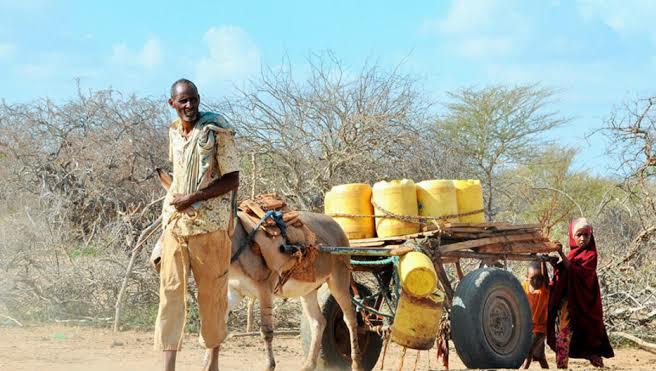NAIROBI, Kenya, Jan 15- Access to clean drinking water is a basic human right, but one that millions of people across sub-Saharan Africa can only dream of, as water shortage is the reality they live in.
Scientists say climate change will only make water stress worse, but that recognizing, measuring, and expressing water’s worth, and incorporating it into decision-making, is fundamental to achieving sustainable and equitable water resources management.
The failure to fully value water in all its different uses is considered a root cause, or a symptom, of the political neglect of water and its mismanagement.
Guarding sources that provide water has been a battle between environmentalists, governments, and those who rely on the water bodies for their survival.
“We wake up early in the morning for use to get early enough to the well, for our goats to drink water,” Nicholas Alkano, a resident of Marsabit County told Shahidi News.
Alkano lives in Logologo ara, one of the drought-stricken areas in the border County.
“At times, we found the water dirty because of the wildlife animals. They too need it,” he said. “For us, fetching water is a whole day affair.”
For residents of Northern counties, the continuous battle of long spells of droughts is a serious threat to their survival.
Scientists say that climate change continues to exert a significant impact on the planet. Among the consequences of this, is water shortage.
The communities in Northern Kenya are pastoralist in nature. Their livelihood and that of their domestic animals depend on pasture and water.
The lack of rainfall and huge bouts of droughts has threatened the very core of their existence.
In Laikipia County, the search for water is a collective affair for women. For the mothers, the strain is worse because they have to tend to their young ones as well.
In other parts of the country, collective initiatives by the local governments and humanitarian organizations have enabled communities once affected by lack of water, have easy access.
For example in parts of Busia County where there was an acute water shortage, the challenge has since been addressed.
“We never used to have water in this school,” Risper Babara, a teacher at Akibui primary school said. “The pupil used to suffer a lot. They used to go for water in a stream down there. That was a seasonal stream. It could dry in a season like this one. Getting water wasn’t easy. Since World vision gave us this water, the children have an easy time.”
Due to the challenges that many communities face, across Kenya and the region, the efforts to bring water closer to households by installing mechanized water pumping systems and networks of pipes have been a relief for many like parts of Teso.
The access to clean water in Teso has enabled schools, health care facilities and animal drinking points to provide safe water to all.
Experts believe that quality compliance at source and at point of use is key to assuring good health and contributes to the well-being of children and families in Sub-Saharan Africa.
A new report by the Global Center for adaptation warned that climate change will lead to an equivalent of 2 percent to 4 percent annual loss in GDP in Africa by 2040.
Africa bears the greatest brunt of Global Warming, despite being the least emitter of Green House gases.
According to data by WHO and UNICEF, billions of people around the world will be unable to access safely managed household drinking water, sanitation and hygiene services in 2030 unless the rate of progress quadruples.
Sub-Saharan Africa is experiencing the slowest rate of progress in the world. Only 54 percent of people use safe drinking water and only 25 percent in fragile contexts.
Want to send us a story? Contact Shahidi News Tel: +254115512797 (Mobile & WhatsApp)


